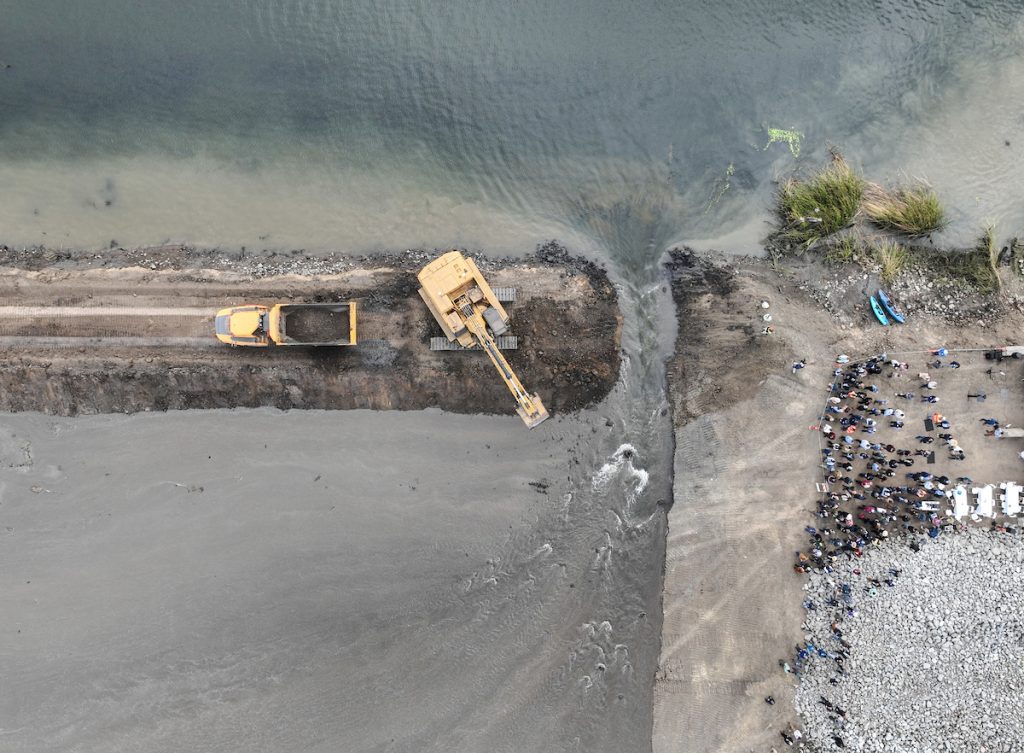In terms of land, Solano County is a little bit smaller — and a whole lot wetter — than it was last week.
On Wednesday, the Department of Water Resources breached a levee to officially open their Lookout Slough project, which they hope will provide years of flood relief and sea level rise mitigation to the surrounding areas.
The department noted that the project was the largest delta restoration for environmental reasons in decades and will build considerable habitat for local species of fish and migratory birds.
RELATED: US drought monitor paints unsettling picture for California
“Protecting people from flooding doesn’t have to be at odds with the environment – it can actually work with it,” said DWR Director Karla Nemeth. “More intense droughts and floods require these solutions. Congratulations to our local, state, federal, tribal, private, and non-profit partners who made this happen.”
Related Articles
US drought monitor paints unsettling picture for California
South Bay flood control project first authorized 70 years ago finally to be finished
Opinion: Climate costs go up if California fails to act with Prop. 4
State Legislature passes 7 bills by Milpitas Assemblymember
Californians to face steep fines for violating water orders under new legislation
The project spans Yolo and Eastern Solano County, as Lookout Slough feeds into the Sacramento River north of Rio Vista.
The project broke ground in June of 2022, and involved the construction of 3 miles of a 25-foot-tall setback levee, which provides 100 years of flood protection, allowing for future sea level rise. Gov. Gavin Newsom said the project is critical not only to the region, but to statewide needs regarding natural resources and wildlife protections.
“This project and the strong partnerships at the heart of its success demonstrate how we can meet the needs of Californians while protecting our rich natural heritage for generations to come.” he said.
Newsom also noted that the project helps the state meet its ecological obligations and climate change mitigation goals.
“California is building on our global climate leadership with innovative solutions that work with nature to safeguard our communities, ecosystems and local economies on the front lines of climate-driven floods and drought,” he said.
The slough will open up opportunities for fishing, wildlife viewing, and more recreative purposes while still providing all of the ecological benefits, the governor’s release read. The governor’s office also supports the Bay Delta Plan, which would potentially cut Solano County municipal water allocations from Lake Berryessa by more than half in order to protect local fish populations, including smelt and salmon.
Lead designers of the project, Beaver Creek Hydrology, built the project to minimize fish stranding areas and maximize breeding areas for delta smelt by building a system that rises and falls with the tides throughout. The design mimics the historical channels of the area, making the man-made channels as close to the real thing as possible.
The California Department of Water Resources (DWR) and Ecosystem Investment Partners (EIP) hold a levee breaching ceremony to celebrate the completion of the Lookout Slough Tidal Habitat Restoration Project in Solano County. The levee will be breached in nine places, creating an open water habitat for fish and wildlife in the Sacramento-San Joaquin Delta. Photo taken September 18, 2024.Andrew Nixon / California Department of Water Resources
Chair of the Solano Board of Supervisors Mitch Mashburn attended the breaching, posting on Facebook that it provides “100-year flood protection.”
“The project is the single largest tidal wetland restoration project in the Delta to date, and it meets the objectives of the Central Valley Flood Protection Plan.”
Mashburn has sometimes been critical of state projects and regulations within the county, including the CEC’s AB 205 approval pathway for battery storage, which he expressed disapproval of at a recent LUTC meeting.
“We need to make sure that our state representatives know that’s not OK,” he said of the removal of local control from the area.


